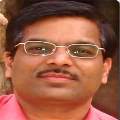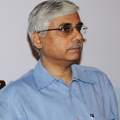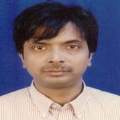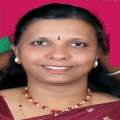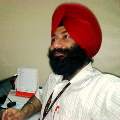Talks & Abstract
Raj Kumar Buyya
Director, Cloud Computing and Distributed Systems (CLOUDS) Lab, The University of Melbourne, Australia CEO, Manjrasoft Pvt Ltd, Melbourne, Australia Title: New Frontiers in Cloud Computing for Big Data and Internet-of-Things (IoT) ApplicationsAbstract: Computing is being transformed to a model consisting of services that are commoditized and delivered in a manner similar to utilities such as water, electricity, gas, and telephony. Several computing paradigms have promised to deliver this utility computing vision. Cloud computing has emerged as one of the buzzwords in the IT industry and turned the vision of "computing utilities" into a reality. Clouds deliver infrastructure, platform, and software (application) as services, which are made available as subscription-based services in a pay-as-you-go model to consumers. Cloud application platforms need to offer (1) APIs and tools for rapid creation of elastic applications and (2) a runtime system for deployment of applications on geographically distributed computing infrastructure in a seamless manner. The Internet of Things (IoT) paradigm enables seamless integration of cyber-and-physical worlds and opening up opportunities for creating new class of applications for domains such as smart cities. The emerging Fog computing is extending Cloud computing paradigm to edge resources for latency sensitive IoT applications. This keynote presentation will cover
-
(a) 21st century vision of computing and identifies various IT paradigms promising to deliver the vision of computing utilities;
(b) Opportunities and challenges for utility and market-oriented Cloud computing;
(c) Innovative architecture for creating market-oriented and elastic Clouds by harnessing virtualization technologies;
(d) Aneka, a Cloud Application Platform, for rapid development of Cloud/Big Data applications and their deployment on private/public Clouds with resource provisioning driven by SLAs;
(e) Experimental results on deploying Cloud and Big Data/Internet-of-Things (IoT) applications in engineering, and health care, satellite image processing, and smart cities on elastic Clouds; and
(f) Directions for delivering our 21st century vision along with pathways for future research in Cloud and Fog computing.
Jemal H. Abawajy
Professor & Director, Distributed System and Security Research Cluster Faculty of Science, Engineering and Built Environment, Deakin University, Australia Title: Energy-efficient cloud datacentre scheduling algorithmAbstract: Energy consumption has become a core issue for Cloud datacenters normal operation. This issue has recently motivated a flurry of research in how to make datacentres efficient not only in regards to performance factors but also in both energy and energy consumption reduction. This talk, we will review various energy consumption and performance management strategies. We will also discuss our approach to minimize datacentre energy consumption while ensuring the quality of service delivered by the Cloud system.
Debashis Saha
Professor, MIS and Computer Science Group, Indian Institute of Management (IIM) Calcutta, Joka, D. H. Road, Kolkata, INDIA Title:Emerging Role of Cloud Computing in IoT-enabled Industry 4.0Abstract: With the advent of wirelessly-connected, battery-powered, low-cost, mass-scale sensors/actuators, the not-so-old disruptive phenomenon - called Internet of Things (IoT) - is ushering in a new era of Cyber-Physical-Systems (CPS) that promises to realize the vision of the fourth industrial revolution (aka Industry 4.0) in near future. Along with its companion exponential technologies such as Cloud computing, Big data analytics and 5G wireless, IoT is rapidly building a strong ecosystem of its own to disrupt the way we live, the way business happens and the way our society evolves. Most importantly, the IoT revolution has already stepped out of the realm of research laboratories to make it distinctly visible on the shop floors and assembly lines of MNCs, which are taking special interest in their own consortium called Internet of Things Consortium (IoTC) (http://iofthings.org/#home) that is tasked with the mandate to fuel the IoT adoption enabled by sustainable business models. All the global industrial giants - GE, Cisco, Nestle, Schneider Electric, Ford Motor, BMW, Google, FB, Tesla, Verizon, Whirlpool, etc. to name a few - are betting big on Industrial IoT (IIoT), which is being considered as the principal driver behind Industry 4.0. To cope up with this changing landscape in services paradigm, fog computing is extending the traditional cloud computing paradigm to the edge of the global IoT, enabling the creation of refined and better applications. But, till date, no standard architecture is available regarding managing resources in the fog, and very limited literature exists on fog computing. Employing IoT's sensing resources in a cloud computing like platform to support remote sensing applications may be an effective approach to realize the Sensing as a Service (SNaaS) vision. The idea is to dynamically augment and scale up existing cloud resources (compute, storage, and network) by exploiting sensing capabilities of devices through cloud agents near the IoT's edge to form a global system named Cloud of Things (CoT). In CoT, heterogeneous resources can be abstracted and aggregated in accordance with the cloud semantics of the "things," thus enabling Things as a Service (TaaS) paradigm. This talk endeavors to unveil some of those imminent research challenges and related issues with a view to encourage the audience to delve into those. Finally, it concludes with an overview of the available candidate technologies plus the current major initiatives towards implementing CoT in near future at least in prototype level.
Krishnendu Ghosh Dastidar
Professor of Economics, Centre for Economic Studies and Planning, School of Social Sciences, Jawaharlal Nehru University, New Delhi-110067, INDIA. Title:On some aspects of scoring auctionsAbstract: In this presentation I will first introduce the basic concepts of "scoring auctions". A brief summary of the literature together with the discussion of core concepts will be provided. I will review the pioneering paper by Che (1993) and the subsequent extensions by Branco (1997), Asker and Cantillon (2008 and 2010). Then I will proceed to discuss the recent results on such auctions where the scoring rules are non-quasilinear (Hanazono et al, 2015). I will also discuss about possible research questions on this topic.
Geetha Manjunath
Data Analytics Research, Xerox Research Centre, India Title:Cloud requirements for Big Data ApplicationsAbstract: While Cloud and Big Data are the top hype words today, they are actually defining a new Computing Era. New technological innovations in software architectures, machine learning algorithms, IOT are emerging. In this talk, I will reflect upon the relationship between Cloud and Big Data applications and share some experiences of creating novel Big Data Applications in Transportation, Healthcare and Customer Care.
Satish Narayana Srirama
Associate Professor, Head of Mobile & Cloud Lab Institute of Computer Science, University of Tartu ‹likooli 17 - 324, Tartu 50090, Estonia Title:Mobile and Cloud Centric Internet of ThingsAbstract: The Internet of Things (IoT) represents a comprehensive environment that consists of a large number of sensors and mediators interconnecting heterogeneous physical objects to the Internet. IoT applications are prominent in many areas such as smart city, smart workplace, smart plants, smart agriculture and various ubiquitous computing areas [1]. The research roadmap of IoT spans across vast domains such as mobile computing, wireless and sensor networks, service oriented computing, middleware, cloud computing and big data analytics, taking advantage of several recent breakthroughs in the respective domains. Primarily, the challenges associated with realization of IoT scenarios can be summarized across three layers: sensing and smart devices layer, connectivity layer and cloud layer. The first layer deals with the physical objects, including energy-efficient communication of the devices and developing the associated standards so that the interaction among the devices is seamless. The connectivity layer deals with the sensor data acquisition and provisioning, through gateways and sinks. Applying predictive analytics for extraction and embedded processing of the sensor data at the connectivity layer reduces the communication latencies and thus also saves energy of the gateways and devices. The top cloud layer deals with resource provisioning for storage and processing of the acquired data in extracting domain specific information. The participation of smart phones both as sensors and the gateways, brings in the scope for mobile web services and mobile cloud services into this cloud based IoT architecture [2, 3]. In addition, the mobile has significant knowledge of the user such as his preferences, context, location etc. which can be used in designing ideal IoT scenarios and applications. The keynote takes the cross-layered approach and tries to address the primary challenges of IoT through mobile web and cloud services. The resulting adaptive middleware allows utilizing IoT devices also in business process management systems, which will be discussed with a case study [4]. In the process, the keynote will also discuss the state of the art of each of the respective research domains along with scope for extensions and recent trends.
Karthik Bharadwaj
CEO and Founder, meghasevA Pvt Ltd, Sydney, Australia Title:The Application of Cloud Computing and Internet-of-Things (IoT) in Energy Conservation and Efficient Energy UtilizationAbstract: The modern need of human beings to consume Energy - Water, Electricity and Gas, is ever increasing and we are using it as though there is no tomorrow. As we are transitioning to use more renewable energy sources such as Solar and Wind Energy, the need to measure the consumption and workout the ways of optimally utilizing it, is increasing. In this talk, I would be sharing my experience and some of our R&D efforts, leveraging Cloud and Internet-of-Things (IoT) Infrastructure in the field of Energy (Water, Electricity and Gas) measurement, monitoring, alerting and savings calculation. I would also throw some light on the recent efforts of our company and some of the partner companies that we are working with, in this area. Powered by the latest Cloud Technologies and IoT devices to alert the end user regularly, we can change the behavioral patterns of our generation and the ones to follow, towards better Energy Conservation and Utilization, leading to saving our Planet's invaluable resources. In the long run, the implication of this would not just be lowering our energy bills but would mainly be saving our Planet, for the future generations to cherish it.
